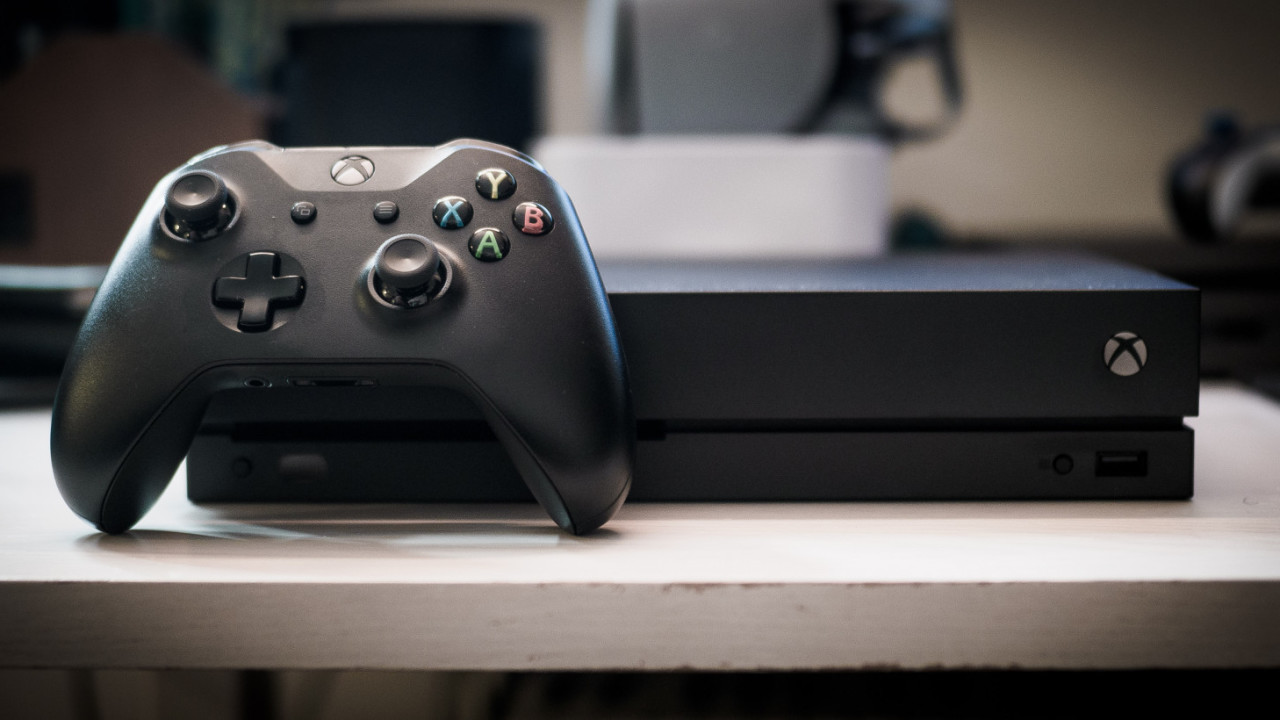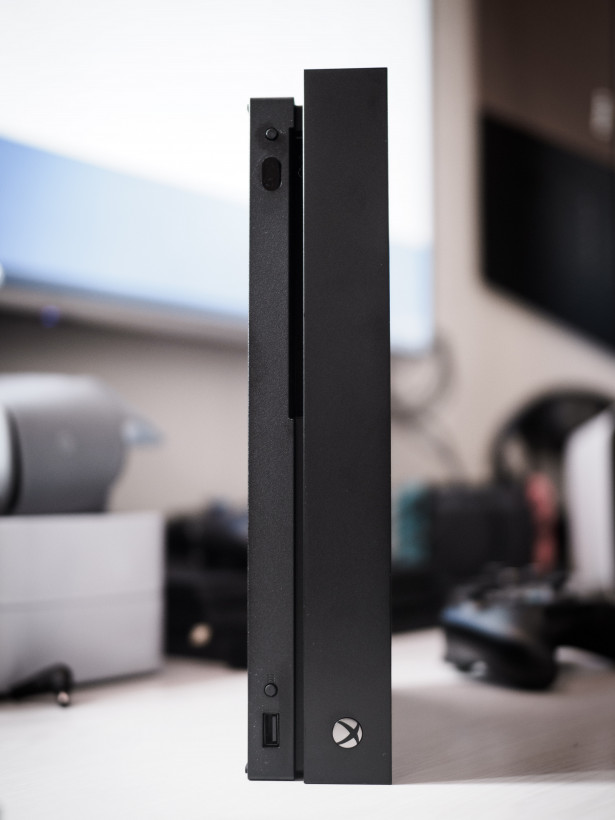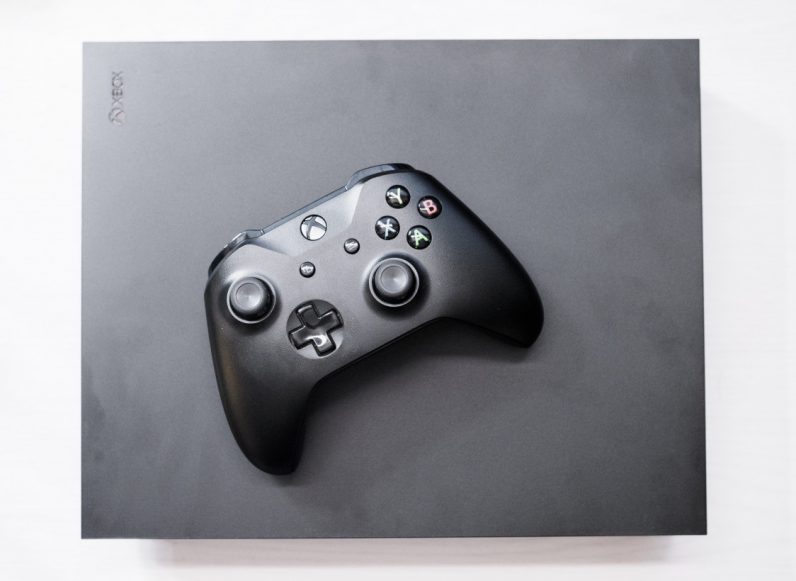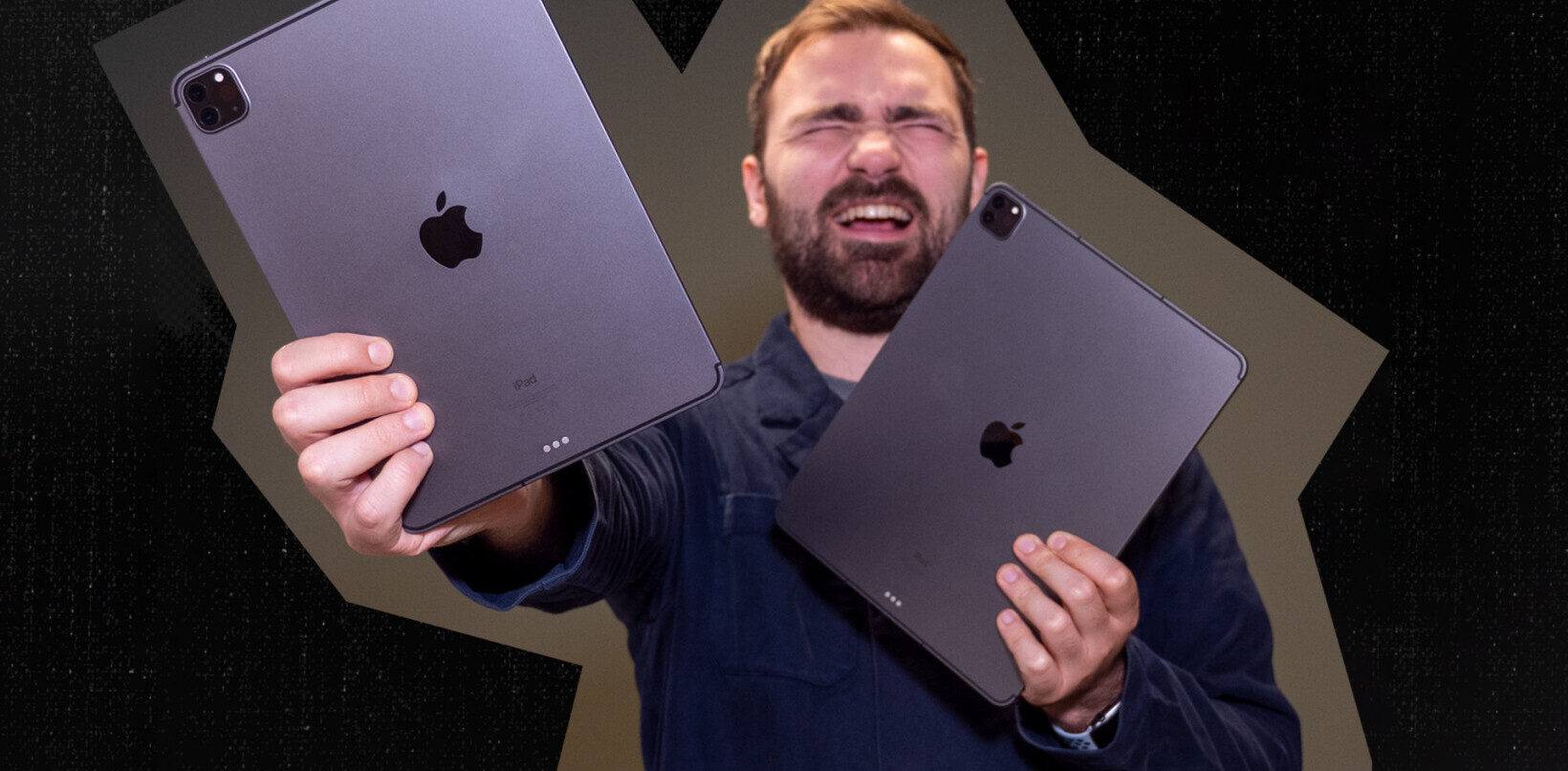
Reviewing the Xbox One X is weird. At a basic level, all there is to say is that it’s an Xbox One with much better graphics. If you don’t have a 4K TV or you generally don’t care about graphics, there’s little reason to purchase a One X.
But this console wasn’t built for such people. The Xbox One X is about raw power, and it’s a testament to Microsoft’s engineering that it managed to fit it all in a package this size.
And really, it’s tiny. It’s kind of crazy to realize the Xbox One X is just as small as the Xbox One S – 40 percent smaller than the original Xbox One – but is about four times as powerful. The comparison holds up against the PS4 Pro too, which takes up a significantly larger footprint despite a lower teraflop count.
That said, the design itself is pretty safe – perhaps a tad boring. The contrasting white of the Xbox One S makes for a much more interesting look, if you ask me, but inconspicuous is better than ugly. I prefer its blocky aesthetic to the PS4, and it’s miles ahead of the original Xbox One.

All that being said, my favorite thing about the Xbox One X’s design is at practical detail – the topside is no longer vented. That means you can stack other things on top of it without worrying about your console overheating. Also, considering I have a sneaking suspicion my original Xbox One died because someone spilled something on it, it’s nice to know I don’t have to worry about that on the new model.
Once you turn it on, navigating the UI is pretty much identical to its predecessors. It’s the same basic software experience – if a bit faster – using the recently updated dashboard with Microsoft’s Fluent Design elements. It gets the job done, and it’s more customizable than ever, but it still feels a little cluttered with the sheer number of options Microsoft throws at you. I like the wider variety of things to pin to your home screen and that it’s easier to access to your games from anywhere, but I still don’t find the UI as intuitive or fluid as Sony’s.
On a related note: despite the console’s 4K gaming chops, for some reason the UI itself doesn’t seem to be running in 4K. As far as I can tell, text, app logos, and UI elements have just been upscaled from 1080p. It’s not a huge bother since you don’t spend that much time in the dashboard anyway, but it comes off as a lack of polish.
One thing Microsoft does have over Sony is the ability to play 4K HDR Blu-Rays. This was the case with the Xbox One S too, but it’s still worth contrasting with the PS4 Pro, which has no such feature. Coupled with HDMI passthrough, it goes a long way towards helping the Xbox family feel like the superior machine for overall media consumption.
But of course, you buy the Xbox One X for the games, and so far, it delivers. I say ‘so far’ because the selection of games that had been updated with Xbox One X support during my testing period was limited to a handful of titles, none of which I could directly compare to the PS4 Pro.

Like the PS4 Pro, how much the Xbox One X delivers on improved graphics will depend heavily on developers, but early results are encouraging. I spent a few hours playing the new ‘Super Lucky’s Tale,’ a game with a gorgeous, cutesy art style, running smoothly at 4K 60fps (albeit without HDR for some reason). ‘Gears of War 4’ uses 4K HDR at 30 fps and looks stunning. ‘Quantum Break,’ on the other hand, runs at ‘only’ 1440p (enhanced via reconstruction), but I didn’t really notice much of a difference at normal viewing distances. It looks really good, and it would be hard to go back to sub-1080p resolutions.
But the verdict is still out on how third party games will handle the Xbox One X’s power, and in practice, I don’t expect Xbox One X games to look that much better than PS4 Pro titles. Checkerboarding goes a long way for making up the gap in resolution, to the extent I doubt most gamers would notice the difference at the usual TV viewing distances. Microsoft might have a bigger advantage in pushing for more advanced effects and higher frame rates; I’d much rather see smooth, advanced effects over a marginal bump in sharpness.
As for games which haven’t been enhanced, I also spent some time playing Final Fantasy XV, whose One X patch is set to arrive sometime soon. I was pleased to find that none of the usual frame rate drips during intense battles and some graphically intensive regions were present on the One X, and load times were much faster. Hopefully that remains the case once the resolution is bumped up.

My biggest practical concern going into the Xbox One X review would be that it run loud and hot due to tight thermal constraints, but Microsoft’s engineers worked some magic. It is both quieter and cooler to the touch than the PS4 Pro running graphically intensive titles, and in fact, virtually as quiet as the Xbox One S.
Onepractical concern I didn’t consider was that 1TB definitely won’t be enough in the long run. 4K assets are huge, and chances are you’ll soon need to pony up for an external hard drive.
Like the PS4 Pro before it, the Xbox One X is a weird console. It improves graphical fidelity, but doesn’t meaningfully add to the core gaming experience. In Microsoft’s case, you don’t even have access to VR titles yet. As such, it’s not an obvious recommendation the way the usual generational upgrades would be. But as I’ve written before, it’s about time the old console cycle died anyway, and giving consumers the option to spend more money for better graphics is a good thing.
In other words, it’s up to you to decide whether the visual bump is worth your $500 for what basically amounts to the same gaming experience. For those who want to squeeze every ounce of graphical detail, the visual improvements are significant, and it’s remarkable that the Xbox One X manages to be the world’s most powerful console in such a small, quiet, and inconspicuous package.
Get the TNW newsletter
Get the most important tech news in your inbox each week.





